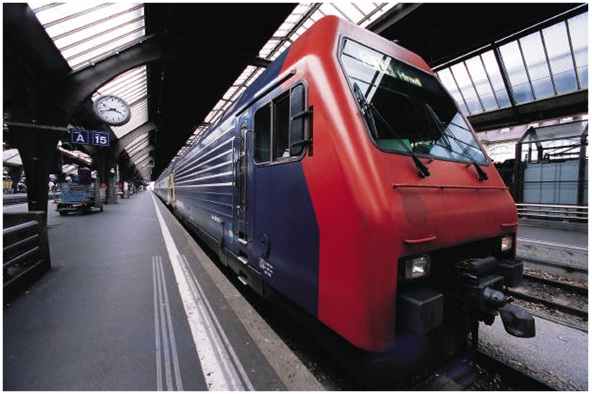Smart City Concept
People migrate to cities primarily for employment. To support their happy and comfortable living, they also need good quality housing, clean air, cost efficient physical and social infrastructure such as water, education ,sanitation, electricity, health care, security, entertainment, etc. Industries also locate in cities because there are agglomeration economies that provide easy access to labour and other factors of production. In this context, Smart Cities are those that are able to attract investments. Good infrastructure, simple and transparent online processes that make it easy to establish an enterprise and run it efficiently are important features of an investor friendly city.

Challenges Faced By Urbanization
Cities are engines of growth for the economy of every nation, including India. Nearly 31% of India’s current population lives in urban areas and contributes 63% of India’s GDP (Census 2011).With increasing urbanization, urban areas are expected to house 40% of India’s population and contribute 75% of India’s GDP by 2030. This requires comprehensive development of physical, institutional, social and economic infrastructure. All are important in improving the quality of life and attracting people and investments to the City, setting in motion a cycle of growth and development. Development of Smart Cities is a step in that direction.
What is a ‘Smart City?’
The first question is what is meant by a ‘smart city’. The answer is, there is no universally Accepted definition of a Smart City. It means different things to different people. The Conceptualisation of Smart City, therefore, varies from city to city and country to country,Depending on the level of development, willingness to change and reform, resources and Aspirations of the city residents.
A smart city (also smarter city) uses digital technologies or information and communication technologies (ICT) to enhance quality and performance of urban services, to reduce costs and resource consumption, and to engage more effectively and actively with its citizens. Sectors that have been developing smart city technology include government services transport and traffic management, energy, health care water and waste.
Smart city applications are developed with the goal of improving the management of urban flows and allowing for real time responses to challenges Major technological, economic and environmental changes have generated interest in smart cities, including climate change, economic restructuring, the move to online retail and entertainment, ageing populations, and pressures on public finances
Definition of Smart City
Smart city as a high-tech intensive and advanced city that connects people, information and city elements using new technologies in order to create a sustainable, greener city, competitive and innovative commerce, and an increased life quality.
Characteristics of Smart City

Institute of Electrical and Electronics Engineers Smart Cities: “A smart city brings together technology, government and society to enable the following characteristics: smart cities, a smart economy, smart mobility, a smart environment, smart people, smart living, and smart governance.
“Smart Cities are those which have smart (intelligent) physical, social, institutional and economic infrastructure. It is expected that such a Smart City will generate options for a common man to pursue his/her livelihood and interests meaningfully. In this context:
Competitiveness refers to a city’s ability to create employment opportunities, attract investments and people. The ease of being able to do business and the quality of life it offers determines its competitiveness.
Sustainability includes social sustainability, environmental sustainability and financial sustainability.
Quality of Life includes safety and security, inclusiveness, entertainment, ease of seeking and obtaining public services, cost efficient healthcare, quality education, and opportunities for participation in governance
Pillars of a Smart City
The Three pillars on which a city rests are its Institutional Infrastructure, Physical Infrastructure and Social Infrastructure. The centre of attention for each of these pillars is the citizen. In other words a Smart City works towards ensuring the best for its entire people, regardless of social status, age, income levels, gender, etc In smart cities buildings, transport and infrastructure should be energy efficient and environmentally.
Smart Cities on the basis of the factors like; Innovations, Sustainability, Use of Information Technology, Digital Governance, Quality of Life, Sanitation, Fast Delivery of Services, Efficient use of Resources, Energy Savings, Low-carbon Economy etc.
Nation Priority in Smart City Development
Smart city is an Area-Based Development where plan will transform an existing place within each city, creating an example for other areas in the city, or across the country, to follow.
Retrofitting will introduce planning in an existing built-up area to achieve Smart City objectives, along with other objectives, to make the existing area more efficient and liveable. Depending on the existing level of infrastructure services in the identified area and the vision of the residents, the cities will prepare a strategy to become smart.
Redevelopment will effect a replacement of the existing built-up environment and enable co-creation of a new layout with enhanced infrastructure using mixed land use and increased density.
Greenfield Development will introduce most of the Smart Solutions in a previously vacant area using innovative planning, plan financing and plan implementation tools (e.g. land pooling/ land reconstitution) with provision for affordable housing, especially for the poor.
Pan-city development envisages application of selected Smart Solutions to the existing city-wide infrastructure. Application of Smart Solutions will involve the use of technology, information and data to make infrastructure and services better. For example, applying Smart Solutions in the transport sector (intelligent traffic management system) and reducing average commute time or cost to citizens will have positive effects on productivity and quality of life of citizens. Another example can be waste water recycling and smart metering which can make a substantial contribution to better water management in the city.
Experiences of Smart Cities across Globe
Beginning of 2013, there were approximately 143 ongoing or completed self- designated smart city projects (Lee at al., 2014) across globe. Accordingly, the top ten Smart Cities of the World are Vienna, Toronto, Paris, New York, London, Tokyo, Berlin, Copenhagen, Hong Kong and Barcelona.
